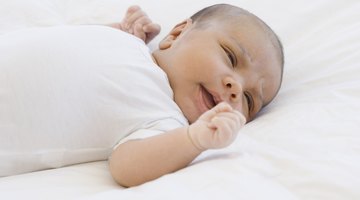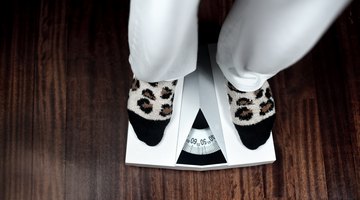The Number of Bones in a Child's Body
Every body possesses a skeleton, made up of bones. These bones allow you to move, they protect your organs and provide a shape to your body.
During your lifetime, your bones grow and change with you, allowing you to change from a child to an adult. As an adult, you end up with fewer bones than you had as a child.
Bone Materials
Bones consist of four materials: periosteum, compact bone, cancellous, and bone marrow.
The periosteum is the outer surface of the bone; it includes nerves and blood vessels that provide nutrients to the bone. The second layer, compact bone, is what is seen in an X-ray. Below compact bone, you will find cancellous material. This layer is a strong, sponge-like material that protects the bone marrow. The jelly-like bone marrow, the innermost part of the bone, creates blood cells.
How Bones Grow

Bone Development in Babies
Learn More
According to KidsHealth, a child has approximately 300 bones in the body at birth. As the child grows, the bones begin to fuse together, resulting in fewer bones.
The bones stop growing together at 25 years old. At this age, growth is normally complete and the human body has reached its maximum size, with 206 bones.
How Bones Fuse Together
As a child grows, some of his bones fuse together, reducing the total countable number of bones in his body.
This is because when a baby is born, some of the bones begin as cartilage.
As the baby ages, the cartilage structures slowly ossify, or harden, and change materials. During ossification the bones fuse together to create an adult skeleton.
Promoting Bone Growth

Stages of Maturation in Children
Learn More
The Physicians Committee for Responsible Medicine, or PCRM, cites that for bones to properly fuse, children need to stay healthy and active.
Exercise allows bones to work and become stronger. Eating fruits and vegetables and calcium-rich foods provides nutrients for healthy bones.
Sunlight provides vitamin D to the body, which controls how the body uses calcium. Without sunlight, the body won’t be able to build healthy, strong bones.
Protecting Your Bones
According to KidsHealth, it is imperative for children to protect their bones so they can fuse together properly. Children should wear helmets to protect the skull when riding a bike or scooter. Children should also wear protective equipment when playing sports to prevent bones from being hurt and damaged.











